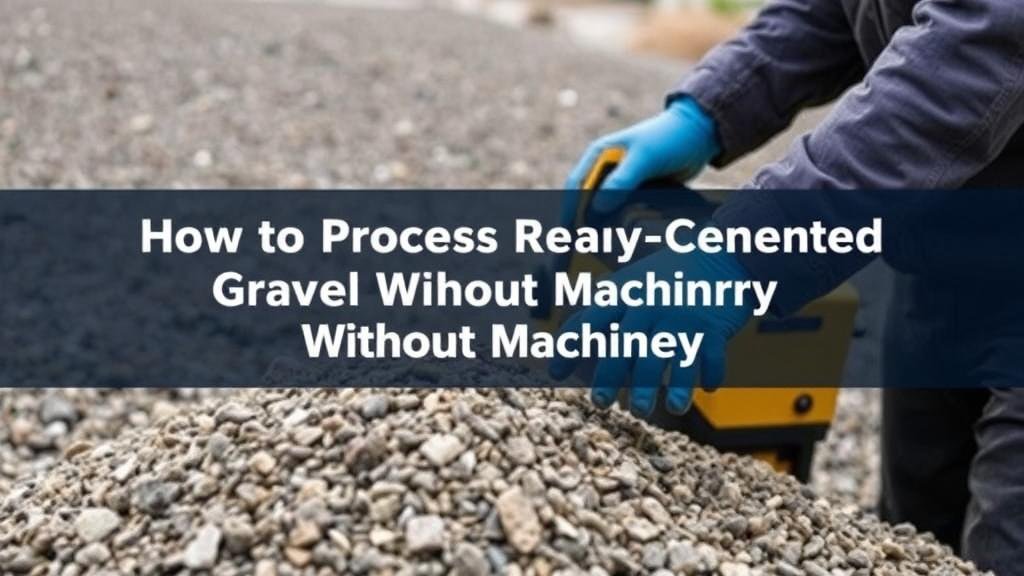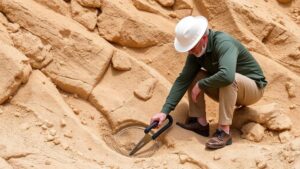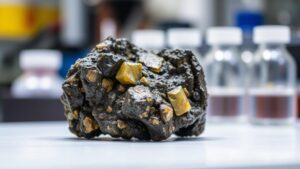How to Process Heavily Cemented Pay Gravel Without Machinery
How to Process Heavily Cemented Pay Gravel Without Machinery
Processing heavily cemented pay gravel is a challenging yet rewarding task for those engaged in small-scale mining or hobby prospecting. While heavy machinery can make the process easier, it is possible to effectively process these materials by utilizing manual techniques. This article discusses methods, tools, and strategies for processing cemented pay gravel without machinery.
Understanding Heavily Cemented Pay Gravel
Heavily cemented pay gravel consists of sedimentary deposits where fine particles have undergone lithification due to the binding qualities of minerals such as silica, calcite, or iron oxide. This makes the gravel tough and dense, requiring specialized techniques for processing. Understanding the composition of the pay gravel is crucial for selecting appropriate processing methods.
Essential Tools and Supplies
To process cemented pay gravel effectively, certain tools are indispensable:
- Pickaxe: A tool for breaking up the tougher sections of cemented gravel.
- Shovel: Useful for digging and moving gravel.
- Panning equipment: Pans for gold panning to separate valuable minerals from the gravel.
- Manual classifiers: Tools to sort materials by size.
- Water source: Required for washing and separation processes.
Steps to Process Heavily Cemented Pay Gravel
1. Breaking Down the Gravel
Begin the processing by breaking down the heavily cemented pay gravel. This can be achieved with a pickaxe, where careful strikes help to fracture the material into smaller, manageable pieces. Aim for consistent sizes, as this will ensure more uniform results in subsequent steps.
2. Washing the Gravel
Washing is critical to remove loose dirt, clay, and other materials. Once the gravel has been broken into smaller pieces, place it in a container with water, allowing the finer materials to wash away. A sturdy screen or mesh can assist in this process by retaining larger chunks while letting finer particles pass through.
3. Classifying Materials
After washing, classify the gravel into different sizes using manual classifiers. This step helps separate larger stones from potentially valuable materials. Pitching gravel into a classifier and shaking allows smaller particles to fall through, making it easier to focus on more promising sections.
4. Panning for Recovery
The final step involves using panning equipment to separate valuable minerals from the processed gravel. Fill a gold pan with the classified gravel and add water. In a gentle spinning motion, tilt the pan to let lighter materials wash away while retaining heavier materials, which may include gold or other desirable minerals.
Real-World Applications and Techniques
Many gold prospectors and small-scale miners have successfully employed these manual techniques for years. For example, during the California Gold Rush, miners utilized similar manual methods, facilitating significant finds without heavy machinery. Today, prospectors in regions such as the Klondike or the Mother Lode continue to use these techniques as a cost-effective and environmentally friendly approach to mining.
Challenges and Considerations
Processing heavily cemented pay gravel without machinery presents various challenges:
- Physical Labor: Manual processing can be labor-intensive and physically demanding.
- Time-Consuming: The process may take longer than using machinery, requiring strategic planning for the work.
- Environmental Concerns: Be mindful of local regulations regarding mining activities and land use.
Takeaways
Processing heavily cemented pay gravel without machinery is entirely achievable with the right tools and techniques. A focused approach, utilizing manual labor, allows enthusiasts to explore mineral deposits while maintaining sustainability. Understanding the material properties and employing efficient methods can lead to successful recovery.
For those considering this method, conducting research on local geology and obtaining necessary mining permits is crucial. Engaging with the prospecting community can also provide valuable insight and techniques for improving efficiency and effectiveness in the field.



